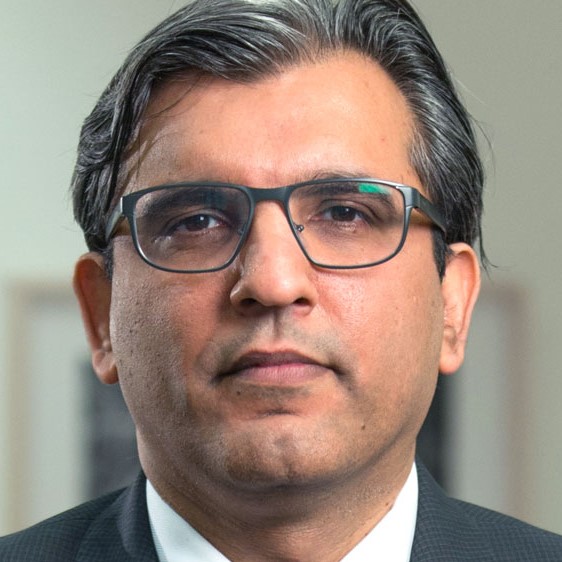That was the easy part. Economies bounced back from the first wave of Covid-19 but many have moved into a tougher regime of further restrictions, eased only by hopes for the swift rollout of an effective vaccine. As policymakers and investors grapple with the world, the elephant in the room they’ll have to confront will be how to manage the heavy public debt racked up governments as they attempt to replace lost economic demand.
Fiscal policy has been critical in generating the rebound
Fiscal policy has proven to be the more critical support for economies during the initial lockdowns in spring 2020, compared with the Global Financial Crisis in 2008 when governments relied more on monetary policy. This time governments in developed markets quickly deployed direct transfers to buffer household incomes as the global economy came to a screeching halt.
Credit guarantees and direct lending to businesses meant that the full weight of the public balance sheet has been used to reduce the likelihood of permanent economic damage and to keep people employed. More fiscal stimulus is likely in the coming months. But, in the US at least, a divided government could limit its size and reach.
We expect the US government to provide a Covid relief package in H1 2021 of around $1 trillion, but overall fiscal spending will be far lower than had the Democrats swept the board at the 2020 election. Amid a second (and perhaps third) wave of Covid, this is unlikely to be enough to maintain strong economic momentum into 2021. Our estimates suggest that total stimulus of around $2 trillion, which includes the $1 trillion of Covid relief as well as other measures, would add just 1.5 percentage points to GDP in 2021.
This implies the Covid-induced output gap is unlikely to close before 2023. On the flip side, tax increases are less likely. This could help growth in the medium term, but worsen the sovereign debt burden in the long term.
Recovery is likely to be fitful
In Europe, new lockdowns to mitigate the second wave are capping the rebound from the first, and growth could be negative in the next couple of quarters. The US is likely to follow suit, given the worsening virus trajectory there. Further restrictions could hinder US economic momentum and make the global recovery fitful and unpredictable.
Beyond Q1 2021, however, activity should rebound as restrictions are lifted, though much depends on how quickly and widely any potential vaccine(s) can be deployed. China remains an exception, as the government’s ability to contain the virus coupled with monetary and fiscal stimulus have already helped the economy to grow in 2020.
We expect this growth to stabilise in China in 2021. Overall, we view risks to global growth forecasts (5.4 per cent according to the latest International Monetary Fund (IMF) projections) as balanced, but remain alert to the risk of a double-dip recession in the US.
Shift in the macro mindset: Austerity can wait
Despite the smaller size of US fiscal stimulus than some had hoped for, government spending is likely to continue for some years to come. The IMF has called for sustained fiscal support in 2021 and beyond (a reversal of the austerity it preached in the aftermath of the 2008/9 crisis).
Indeed, the IMF has called on developed market countries to take advantage of the low rates put in place by central banks and to continue to borrow heavily. It has also recommended boosting public consumption and investment programmes to support a recovery.
The shift in ideology is significant, especially given the fact that the spending spree so far has already pushed developed market public debt ratios beyond those seen after World War Two.
In emerging markets too, government spending is on the rise. Economic theory offers three ways to reduce debt burdens: 1) disruptive de-leveraging as happened during the Great Depression, 2) high inflation and 3) high nominal growth generated by stronger real growth. In our view, how the high debt load is managed will remain one of the biggest macro drivers of global economic progress and the policy cycle in the coming quarters.
Central banks may require other tools to mitigate a fiscal cliff
The jury is still out on how inflation will develop in 2021. But in the absence of a massive fiscal boost, it will be harder for the Fed alone to generate a sustainable increase in inflation, despite adopting a flexible average inflation targeting framework. Loosening an already loose policy is likely to have less impact than it did in 2020. Nonetheless, we expect the Fed to ease policy in the near term as it responds to changing market and economic conditions.
As Covid-19 relief packages expire and to help mitigate the impact of a pending fiscal cliff, the Fed may also have to buy longer duration bonds, increase the pace of asset purchases and strengthen forward guidance. More easing is also likely in Europe given weaker growth and inflation expectations. Ever-easier monetary policy is therefore likely to become structural, especially in developed markets.
Climate change starting to affect macro policy
America voting for a president who accepts climate change exists and plans to do something about it, the Green Deal agreed by the European Union, and the net zero announcement from China has set the stage for climate in 2021.
These events demonstrate the potential extent to which climate policies could alter the entire structure of the global economy and the impact they could have on the conduct of macroeconomic policy in the years to come.
One example may be the introduction of a higher carbon price, given the trillions of dollars ($16 trillion according to the International Energy Agency) that need to be invested in clean energy by 2030. Central banks are focused on the issue. Several are rapidly developing stronger analytical and policy machinery to help understand the implications of physical climate risks and how policymakers can facilitate the transition towards a zero-carbon future.
In June 2021, the Bank of England will publish the results of climate-related stress tests of the financial system. This could provide a robust international framework for other central banks to follow.
Regaining debt sustainability
The path of recovery in 2021 is unlikely to be smooth. The rollout of a Covid-19 vaccine may come too late to stop another severe virus wave and the economic disruption may only be partially mitigated by a more modest fiscal impulse in the US.
In the medium term, the recovery will depend on how well the sharp expansion of debt to deal with the Covid crisis is managed and which path countries take towards debt sustainability (voluntarily or involuntarily).
Many of the transformational changes in macro policy and economic models triggered by the Covid crisis are yet to play out, including how we deal with the even bigger threat of climate change. In that context, the elephant has only just entered the room.










































